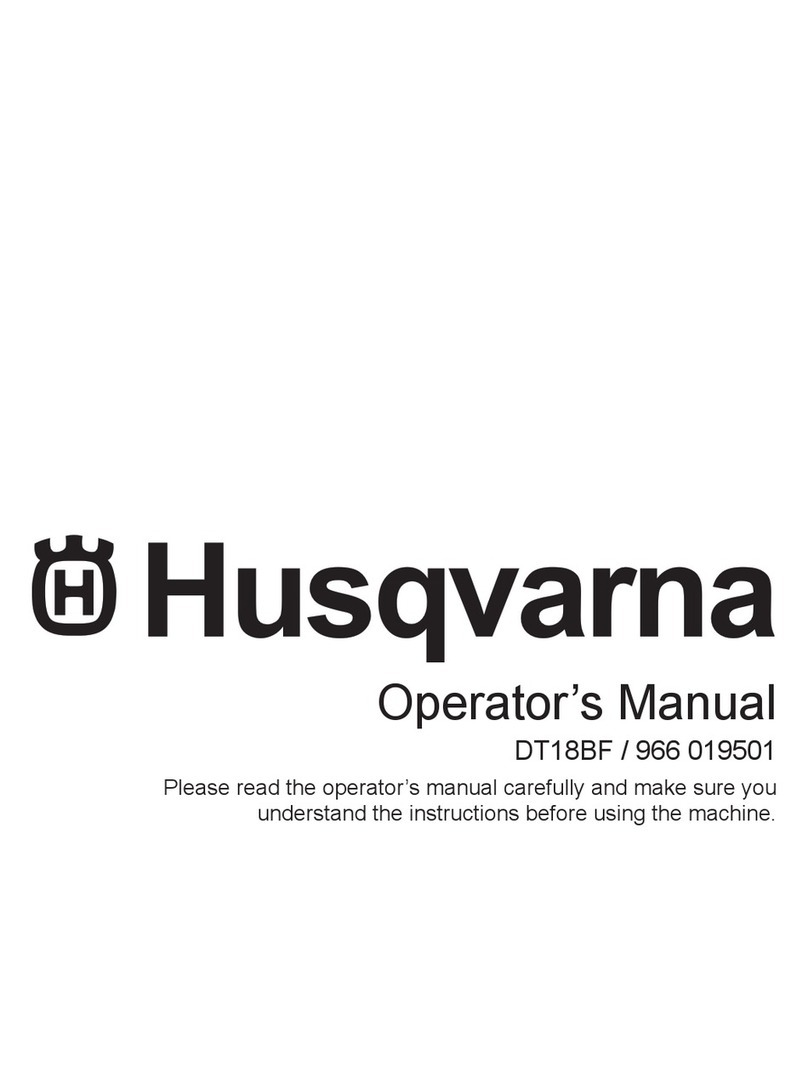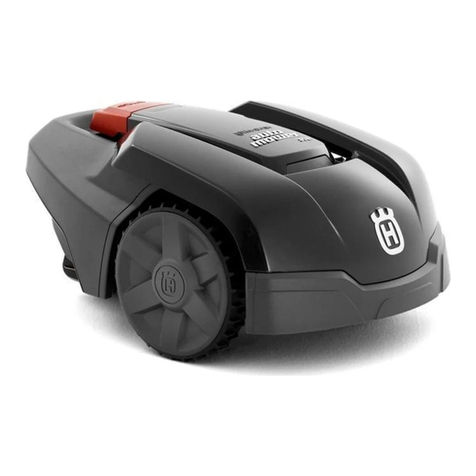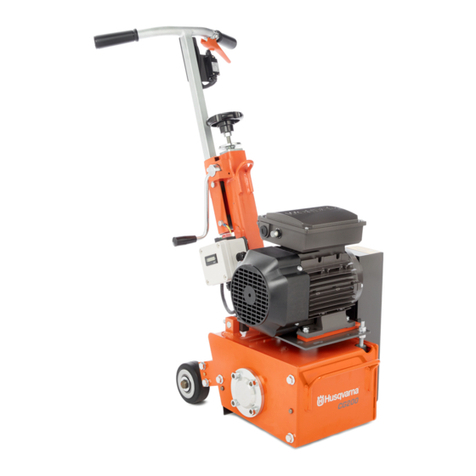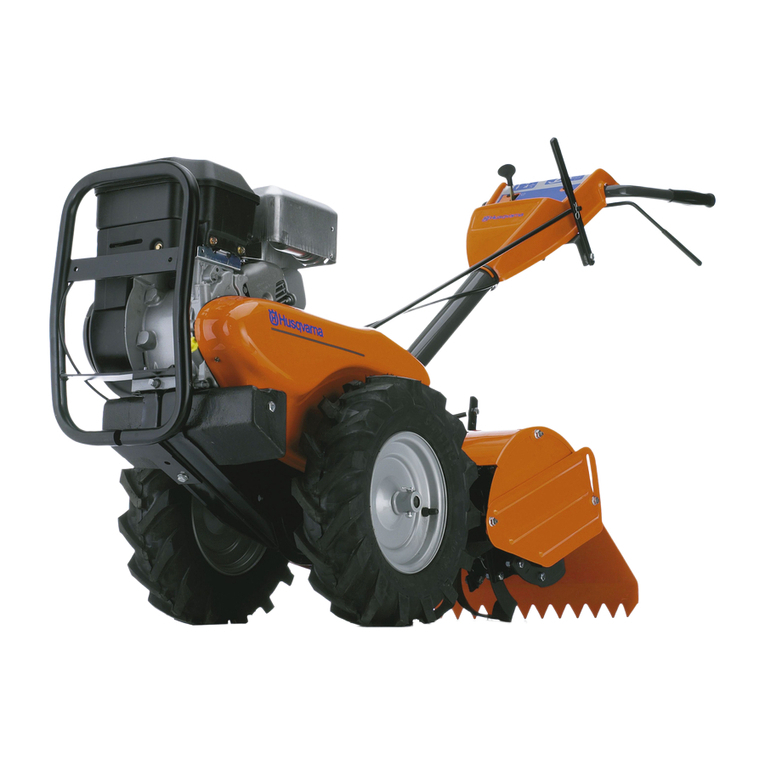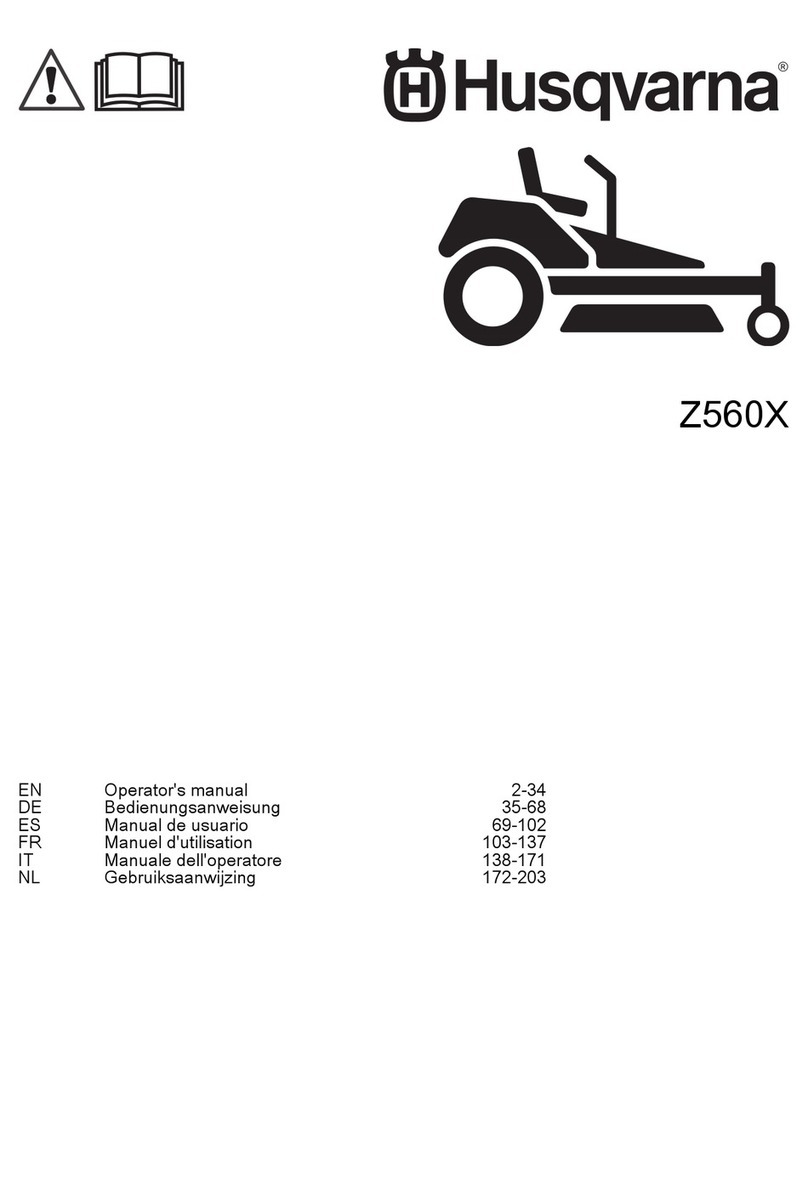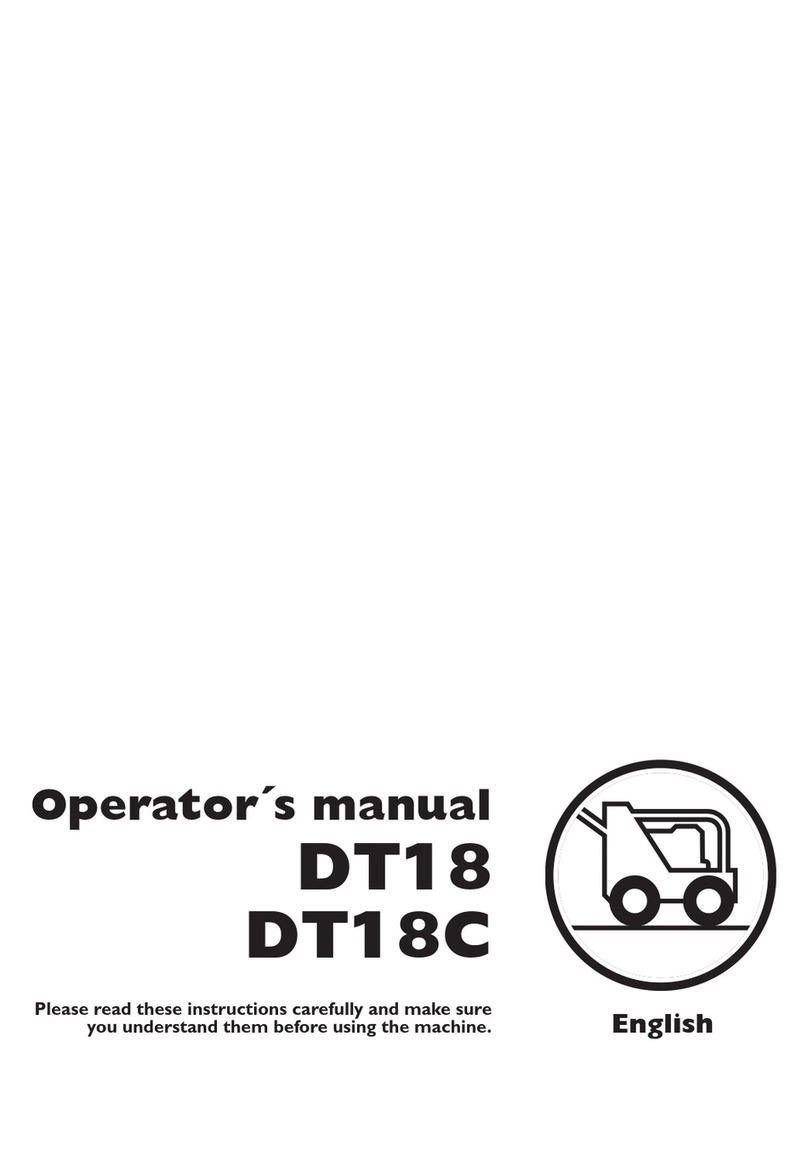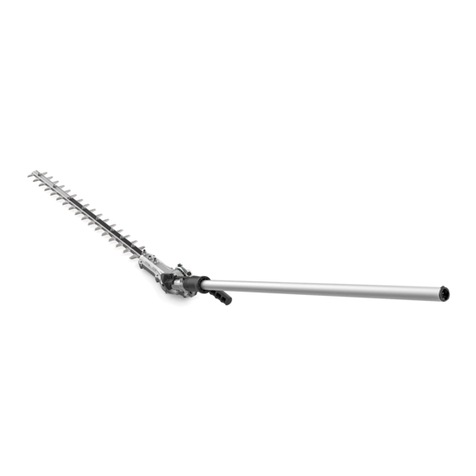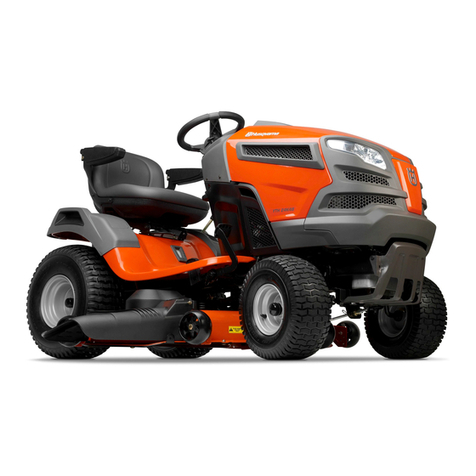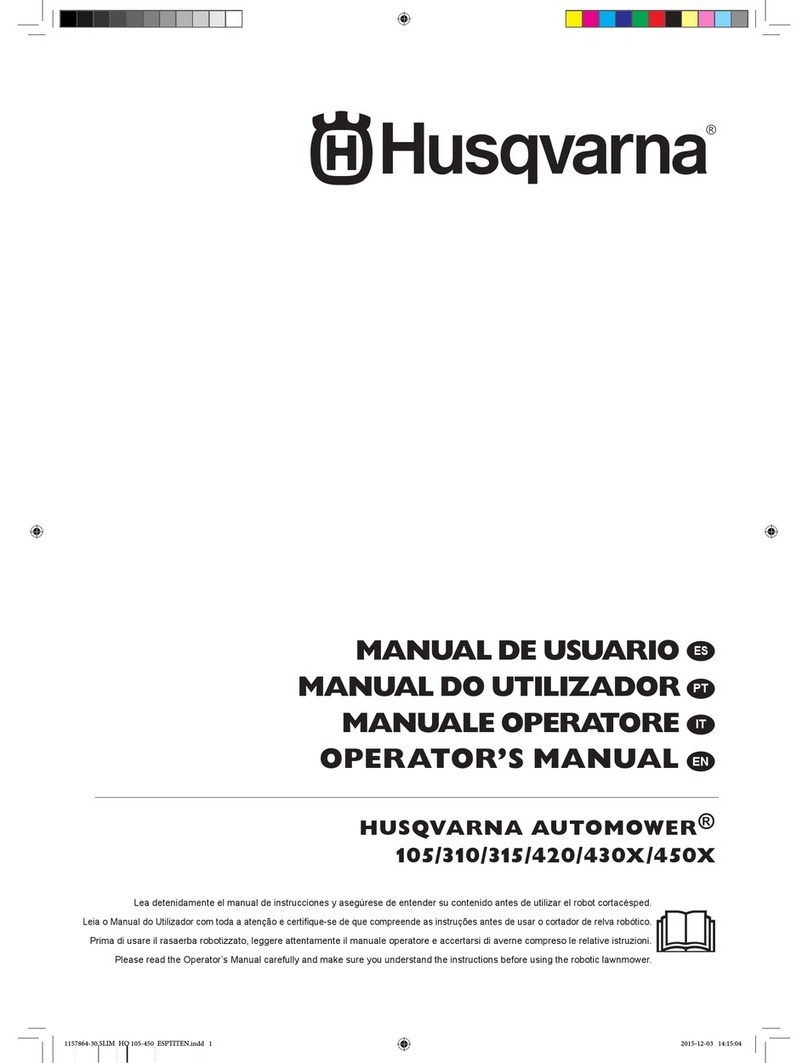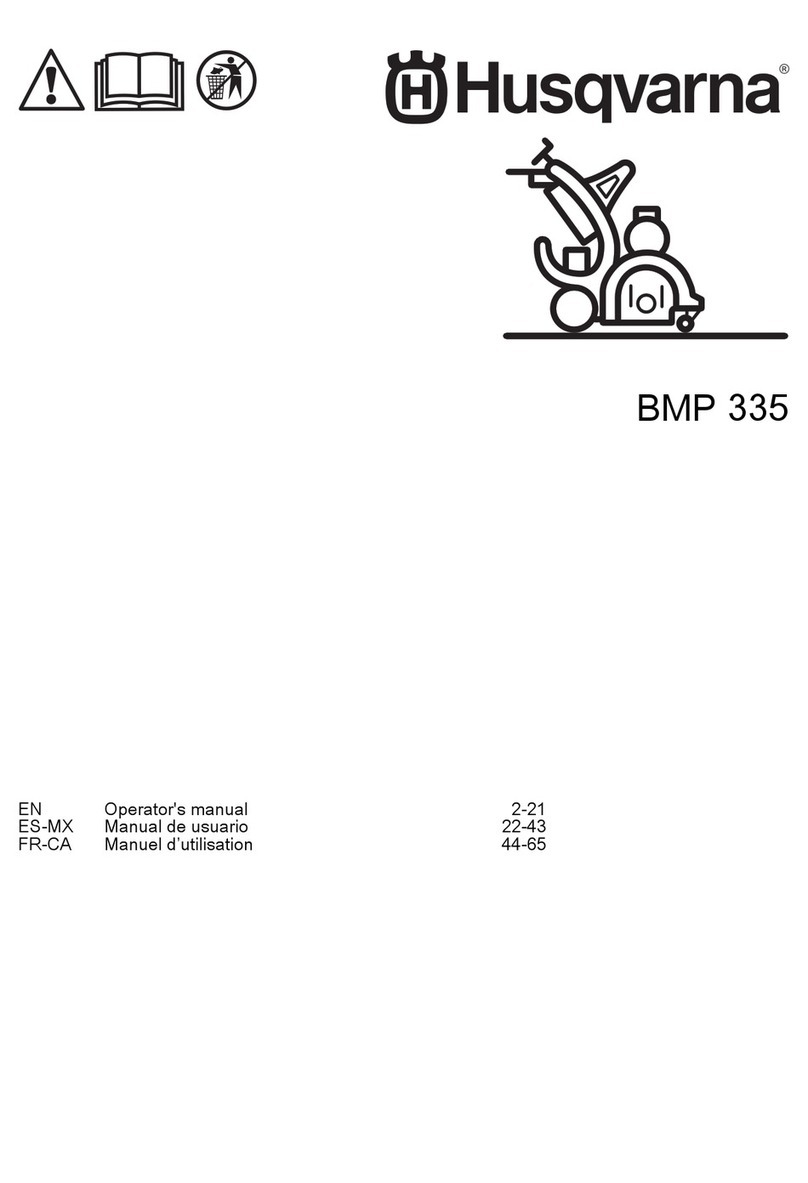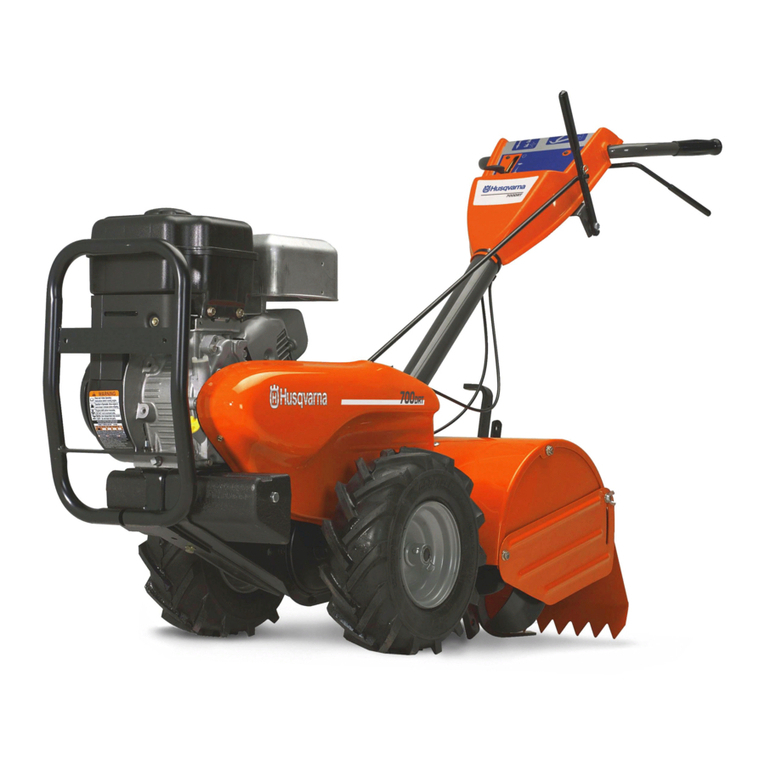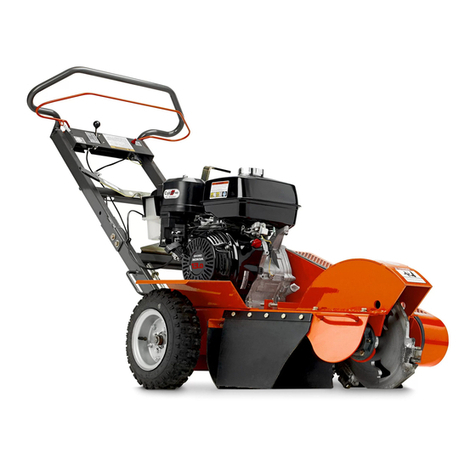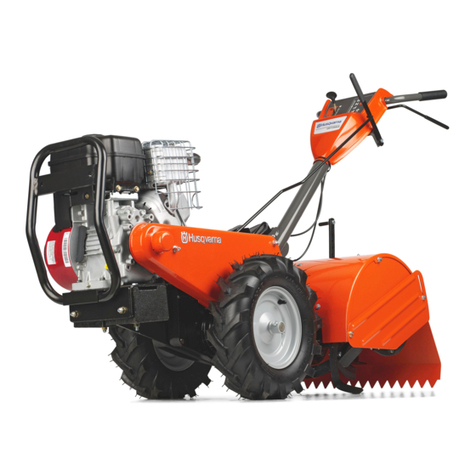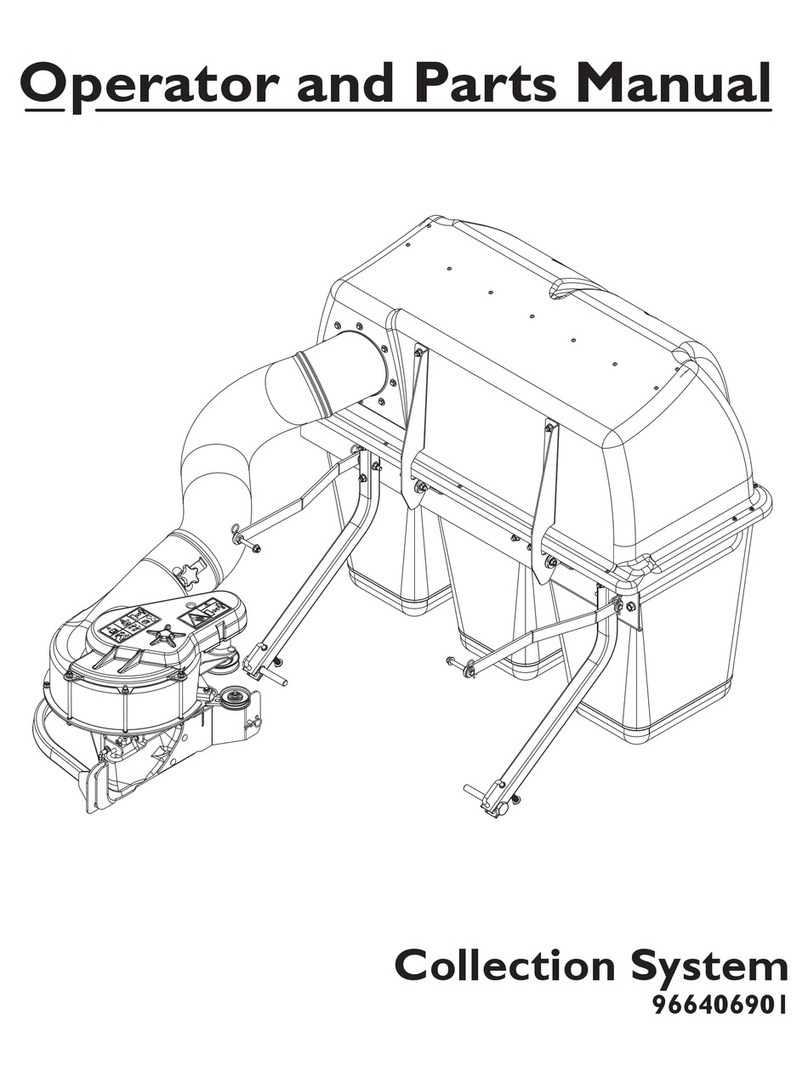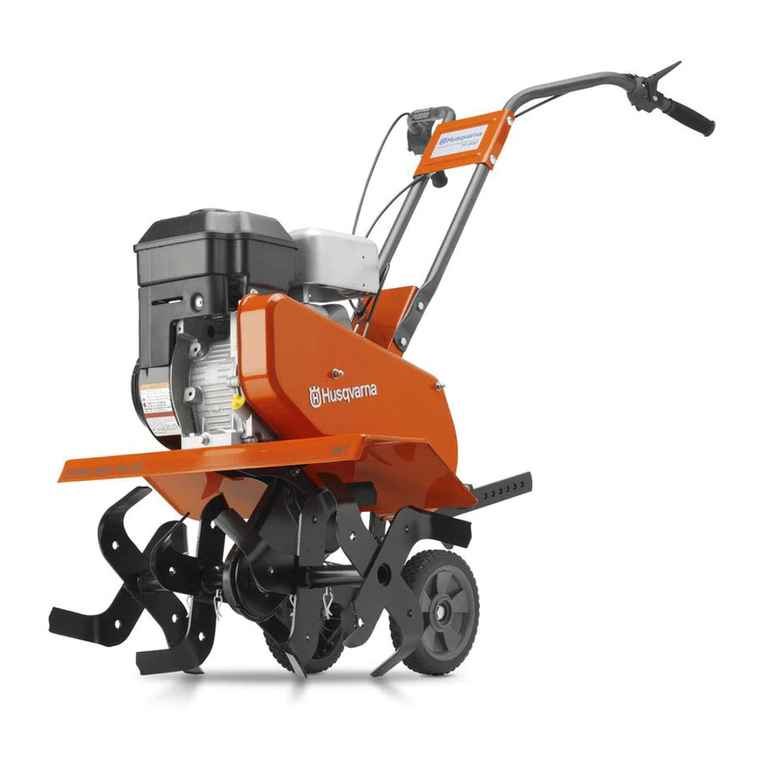
1. INSTALLATION ET BRANCHEMENT DE LA STATION DE CHARGE
Voir chapitres 3.2 et 3.3 du manuel d’utilisation
1. Placez la station de charge à un endroit central de la zone de tonte, avec un grand espace ouvert face à elle, et sur une
surface relativement horizontale.
2.Branchez le câble basse tension du transformateur à la station de charge et au transformateur.
3.Branchez le transformateur à une prise murale de 230 V.
4. Placez le robot de tonte dans la station de charge pour charger la batterie pendant la pose du câble périphérique.
Mettez l’interrupteur principal en position 1.
2. POSE DU CÂBLE PÉRIPHÉRIQUE ET DU CÂBLE GUIDE
Voir chapitre 3.4 du manuel d’utilisation
1. Disposezlecâblepériphériqueanqu’ilformeuneboucleautourdelazonedetravail.
2.Faites un oeillet au point où le câble guide sera connecté ultérieurement.
3.Faites courir le câble guide jusqu’au point du câble périphérique où se fera la connexion. Évitez de poser le câble dans
des angles serrés.
3. CONNEXION DU CÂBLE PÉRIPHÉRIQUE ET DU CÂBLE GUIDE
Voir chapitre 3.5 du manuel d’utilisation
1. Les passages étroits de votre pelouse compliquent la tâche du robot de tonte pour trouver la station de charge. Le robot
de tonte peut être dirigé vers des zones éloignées du jardin à l’aide du câble guide. Le câble guide permet aussi au
robot de tonte de trouver rapidement la station de charge.
2.Disposez le câble guide sous la station de charge et à au moins 2 mètres de la partie frontale de la station de charge.
3.Ouvrez les connecteurs et placez les extrémités du câble dans les rainures de chaque connecteur.
4. Serrez les connecteurs à l’aide d’une pince.
5.Coupez tout excédent de câble périphérique. Coupez 1 à 2 cm au-dessus des connecteurs.
6.
Enfoncez les connecteurs dans les broches de contact, indiquées par AL (gauche) et AR (droite) sur la station de charge.
Il est important que le câble de droite soit connecté à la broche de droite et le câble de gauche, à la broche de gauche.
7. Branchez le connecteur à la broche de contact indiquée par G1 sur la station de charge.
4. CONNEXION DU CÂBLE GUIDE AU CÂBLE PÉRIPHÉRIQUE
Voir chapitre 3.6 du manuel d’utilisation
1. Coupez le câble périphérique à l’aide d’une pince coupante au centre de l’oeillet que vous avez fait à l’étape 2.2.
2.Branchez le câble guide au câble périphérique à l’aide des coupleurs fournis. Pressez complètement les coupleurs à
l’aide d’une pince.
5. DÉMARRAGE ET ARRÊT
Voir chapitres 4.3 et 4.4 du manuel d’utilisation
DÉMARRAGE
1. Ouvrez le capot en appuyant sur le bouton STOP.
2.Mettez l’interrupteur principal en position 1. Quand vous faites ceci pour la première fois, une séquence de démarrage
commence au cours de laquelle vous sélectionnez un code PIN à quatre chiffres, notamment.
3.Appuyez sur le bouton START et fermez le capot.
ARRÊT
Appuyez sur le bouton STOP.
6. RÉGLAGE DU ROBOT DE TONTE EN FONCTION DE VOTRE PELOUSE
Voir chapitre 6.3 du manuel d’utilisation
RÉGLAGE DU ROBOT DE TONTE EN FONCTION DE LA TAILLE DE VOTRE PELOUSE
Les résultats de tonte dépendent du temps de tonte. Ajustez le temps de tonte en fonction de votre pelouse à l’aide de la
fonction Minuterie. Vous décidez les heures de la journée et les jours de la semaine pour la tonte de votre pelouse. Le robot
de tonte tond environ 135 m² par heure et par jour (environ 90 m² en ce qui concerne le modèle Automower®320). Si par
exemple votre pelouse s’étend sur 1 200 m², il convient de faire fonctionner le robot de tonte 9 heures par jour en moyenne
(13 heures pour le modèle Automower®320).
7. MAINTENANCE
Voir chapitre 8 du manuel d’utilisation
1. L’interrupteur principal doit toujours être en position 0 pendant toutes les tâches sur le châssis du robot de tonte, telles
que le nettoyage ou le remplacement des lames. Remplacez les lames régulièrement pour obtenir des résultats de
tonte optimaux.
2.Ne nettoyez jamais le robot de tonte avec un nettoyeur à haute pression ni à l’eau courante. N’utilisez jamais de
solvants pour le nettoyage.
3.Tous les raccordements de la station de charge (alimentation électrique, câble périphérique et câble guide) doivent être
débranchés en cas de risque d’orage.
4. Chargezcomplètementlabatterieàlandelasaisonavantderangerlerobotpourl’hiver.
1. COLOCACIÓN Y CONEXIÓN DE LA ESTACIÓN DE CARGA
Consulte los capítulos 3.2 y 3.3 del Manual de instrucciones
1. Coloquelaestacióndecargaenelcentrodelazonadetrabajo,enunasupercierelativamentehorizontalydejando
mucho espacio libre delante de la estación de carga.
2.Conecte el cable de tensión baja del transformador a la estación de carga.
3.Conecte el transformador a una toma de corriente de pared de 230 V.
4. Coloque el robot cortacésped en la estación de carga para cargar la batería, mientras tiende el cable delimitador.
Coloque el interruptor principal en la posición 1.
2. INSTALACIÓN DEL CABLE DELIMITADOR Y EL CABLE GUÍA
Consulte el capítulo 3.4 del Manual de instrucciones
1. Tienda el cable delimitador y asegúrese de que forma un bucle alrededor de la zona de trabajo.
2.Haga un ojal en el punto donde luego conectará el cable de guía.
3.Tienda el cable de guía hacia el punto del bucle delimitador para establecer la conexión. Procure que el cable no siga
ángulos cerrados.
3. CONEXIÓN DEL CABLE DELIMITADOR Y EL CABLE GUÍA
Consulte el capítulo 3.5 del Manual de instrucciones
1. Los pasillos estrechos del jardín pueden hacer que al cortacésped le resulte difícil encontrar la estación de carga.
Gracias al cable guía, el robot cortacésped puede acceder a zonas alejadas del jardín. El cable guía también ayuda al
robot cortacésped a encontrar rápidamente la estación de carga.
2.Extienda el cable guía por debajo de la estación de carga y al menos 2 metros en línea recta desde la parte frontal de la
estación de carga.
3.Abra el conector e introduzca los extremos del cable en las muescas de cada conector.
4. Presione los conectores con unos alicates.
5.Corte el cable delimitador que sobre, de 1 a 2 cm por encima de los conectores.
6.Presione los conectores sobre las clavijas de contacto, marcadas con AL (izquierda) y AR (derecha), en la estación de
carga. Es importante que el cable derecho esté conectado a la clavija de contacto derecha y el cable izquierdo, a la
clavija izquierda.
7. Fije el conector a la clavija de contacto marcada como G1 en la estación de carga.
4. CONEXIÓN DEL CABLE GUÍA AL CABLE DELIMITADOR
Consulte el capítulo 3.6 del Manual de instrucciones
1. Corte el cable delimitador con unas tijeras para cables en el centro del ojal que ha hecho anteriormente, según indica
el punto 2.2.
2.Conecte el cable de guía al cable delimitador con los acopladores que se adjuntan. Presione los acopladores juntos
con unos alicates.
5. ARRANQUE Y PARADA
Consulte los capítulos 4.3 y 4.4 del Manual de instrucciones
ARRANQUE
1. Pulse el botón de PARADA para abrir la cubierta.
2.Coloque el interruptor principal en la posición 1. Cuando haga esto por primera vez, se pondrá en marcha una
secuencia de arranque, donde seleccionará un código PIN de cuatro dígitos, entre otras cosas.
3.Pulse el botón de ARRANQUE y cierre la tapa.
PARADA
Pulse el botón de PARADA.
6. ADAPTE EL CORTACÉSPED AL TAMAÑO DEL CÉSPED
Consulte el capítulo 6.3 del Manual de instrucciones
Los resultados dependerán del tiempo de corte. Adapte el tiempo de corte a su jardín con la función de Temporizador. Usted
decide a qué horas del día funciona el robot cortacésped. El robot cortacésped corta aproximadamente 135 m² de césped
por hora y día (el Automower®320 aproximadamente 90 m²). Por ejemplo: si en su jardín hay 1200 m² de césped, el robot
cortacésped debería funcionar una media de 9 horas al día (el Automower®320, 13 horas).
7. MANTENIMIENTO
Consulte el capítulo 8 del Manual de instrucciones
1.
El interruptor general debe estar en la posición 0 para hacer cualquier tipo de trabajo en el bastidor del cortacésped;
como limpieza y cambio de cuchillas. Cambie las cuchillas periódicamente para obtener los mejores resultados al cortar.
2.Nunca utilice un equipo de limpieza de alta presión ni agua corriente para limpiar el robot cortacésped. No utilice nunca
disolventes para la limpieza.
3.Todas las conexiones a la estación de carga (la alimentación eléctrica, el cable delimitador y el cable guía) deben estar
desconectadas si existe riesgo de tormenta eléctrica
4. Carguetotalmentelabateríaalnaldelatemporada,antesdealmacenarlaparaelinvierno.
ES FR

